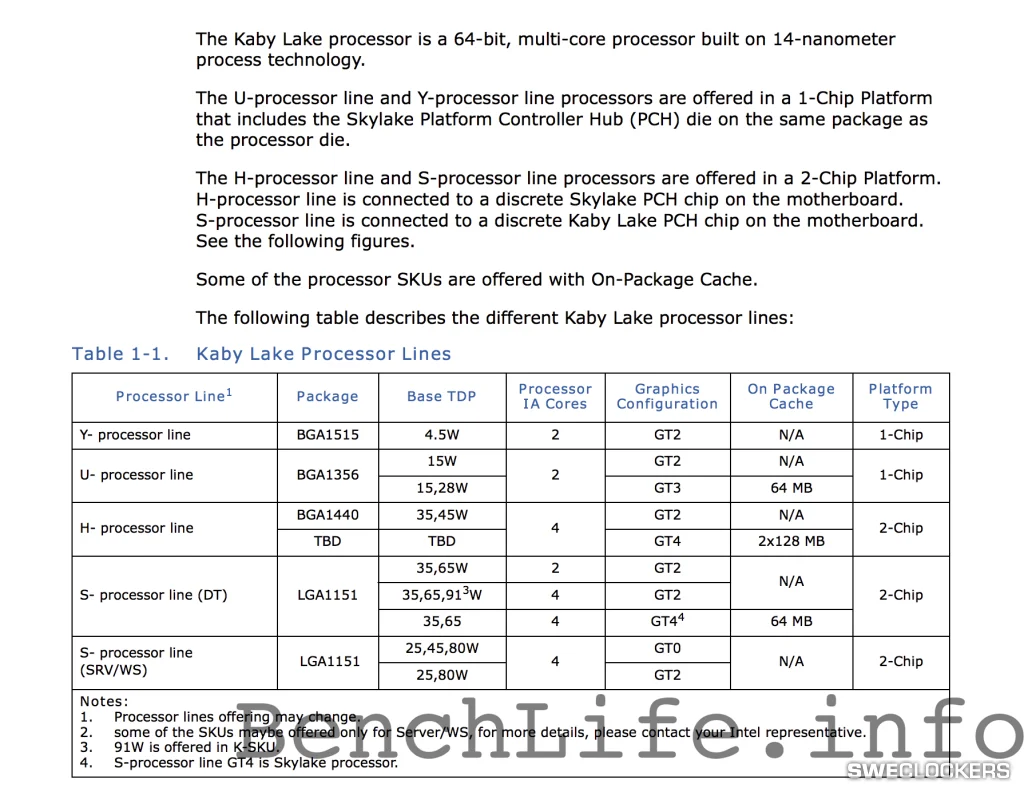Sweclockers posts today about a new "emergency" 14nm processor to avoid another Broadwell debacle with the upcoming Cannondale chip/11nm process.

One interesting tidbit the eagle-eyed can discern from this product matrix is a H-processor line, possibly mobile/BGA variant, equipped with GT4 graphics and not just one, but actually TWO 128MB Crystalwell eDRAM cache chips...! That has the potential to be a real powerhouse, as far as on-chip graphics is concerned. Veeeery interesting, I must say! Especially if "TBD" in package column means it will be a socketed processor, preferably with 90W+ TDP.

One interesting tidbit the eagle-eyed can discern from this product matrix is a H-processor line, possibly mobile/BGA variant, equipped with GT4 graphics and not just one, but actually TWO 128MB Crystalwell eDRAM cache chips...! That has the potential to be a real powerhouse, as far as on-chip graphics is concerned. Veeeery interesting, I must say! Especially if "TBD" in package column means it will be a socketed processor, preferably with 90W+ TDP.


